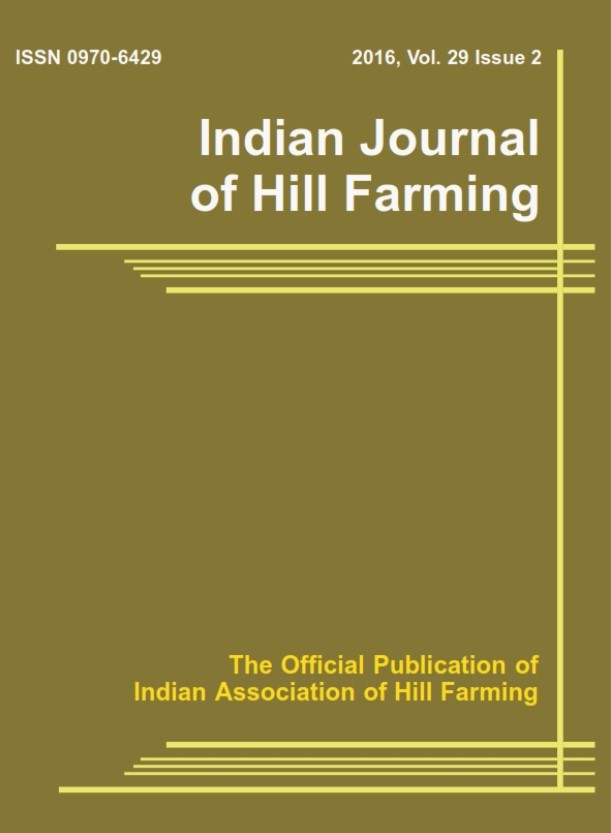Soil health under the in-situ cereal residue management of rice-wheat cropping system in the Indo-Gangetic Plain of Eastern India
DOI:
https://doi.org/10.56678/iahf-2024.37.02.9Keywords:
Indo-Gangetic Plains; , Soil Productivity; Soil Health Index; , Sustainable EnvironmentAbstract
The Indo-Gangetic Plains (IGP) of Eastern India are raising the widespread cereal residue burning rendering low soil productivity thereby threatening a sustainable environment. In-situ cereal residue management is a promising approach. In the present experiment conducted in Eastern India i.e., Pusa, Bihar under the rice-wheat cropping system (RWCS), the treatment T5 under the in-situ incorporation of cereal residue (CR), and green manure (GM) along with cereal residue decomposer (CRD) showed the significantly highest soil health indicators such as AWC, WAS, WHC, DHA, FDA, ALP, active C, SOC, available Ca, available Mg, available Fe, and available Cu followed by the treatment T4 under CR and GM and the lowest was reported by the control treatment T8 among all the treatments. Moreover, treatment T5 also showed the highest Soil Health Index (SHI) followed by treatments T4 and T3. As per Pearson’s coefficient correlation between soil health indicators and SHI, the soil health indicator i.e., FDA had the highest and strongest positive correlation with SHI and the lowest with WAS, however, BD, pH, and free CaCO3 were strongly and negatively correlated with SHI. Based on the above experimental findings, the in-situ cereal residue management under RWCS along with GM and CRD would be dual-benefits such as reducing cereal residue burnings and enhancing soil health for achieving a sustainable environment in the IGP of Eastern India.
Downloads
Published
Issue
Section
License
Copyright (c) 2025 Devi Shidayaichenbi, Ashok Kumar Singh, Vipin Kumar, Santosh Kumar Singh, Ranjan Laik, Sanjay Tiwari, Shiv Shanker Prasad, Rajan Kumar (Author)

This work is licensed under a Creative Commons Attribution-NonCommercial-NoDerivatives 4.0 International License.




